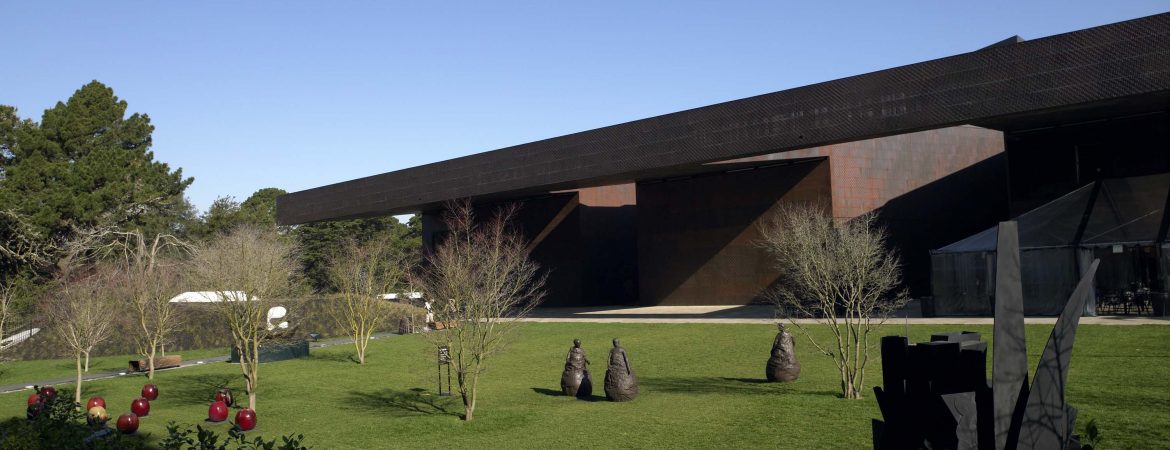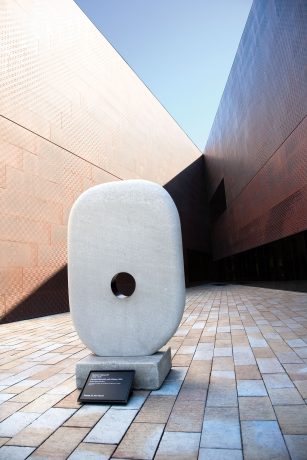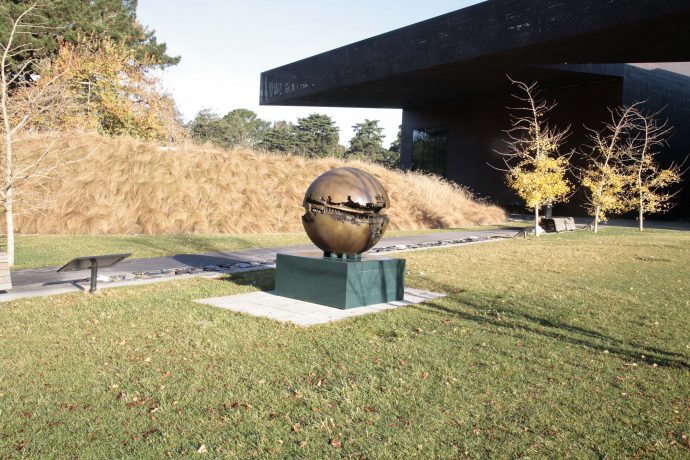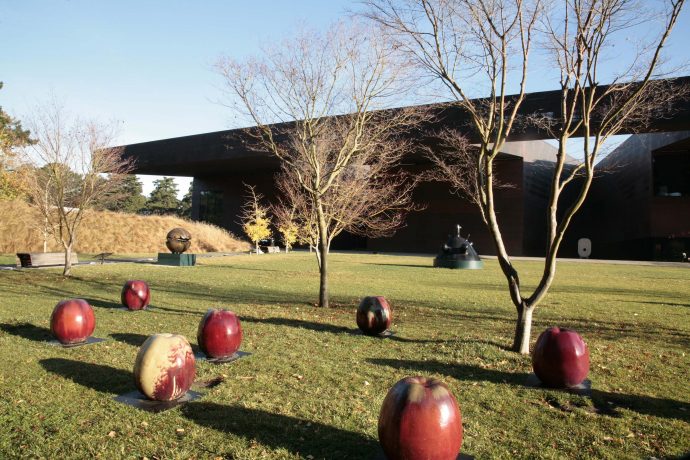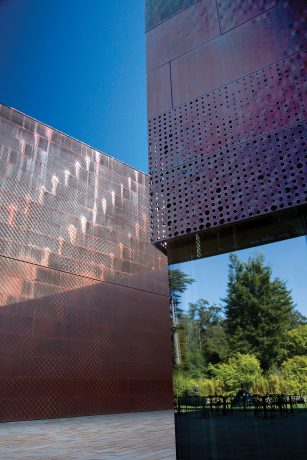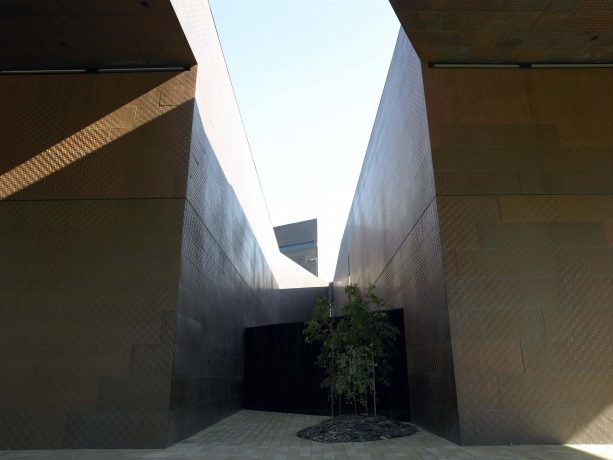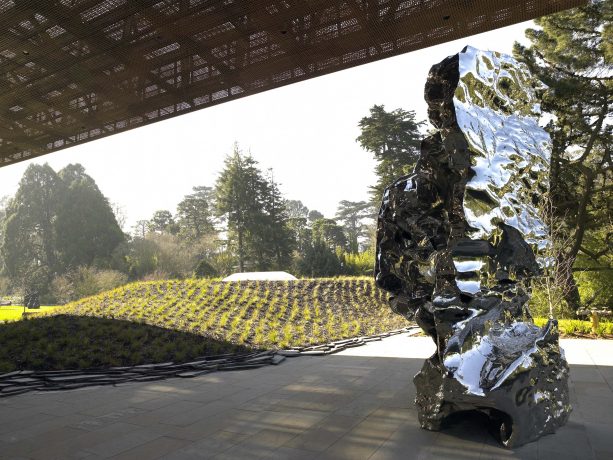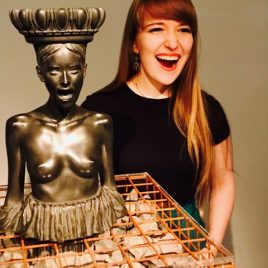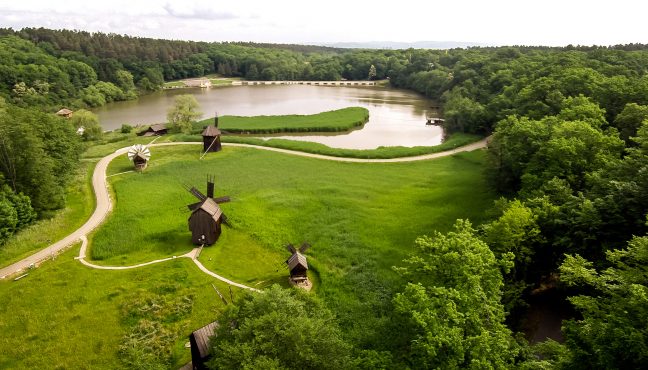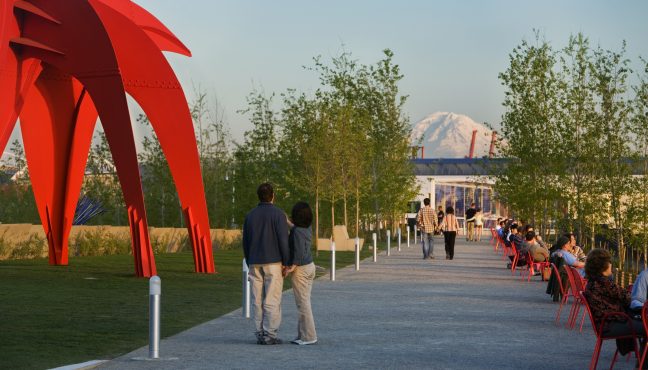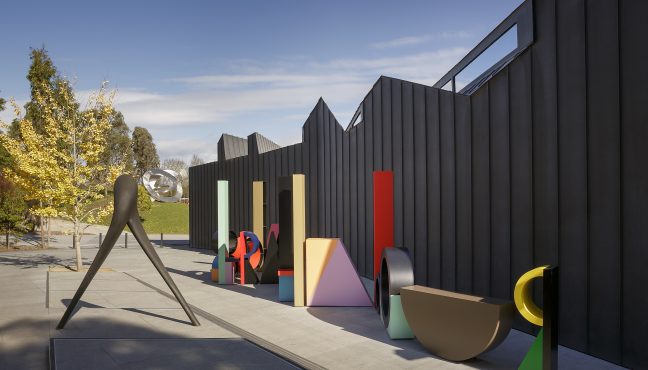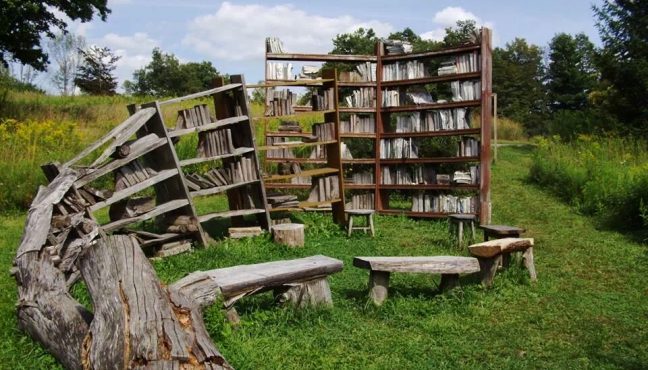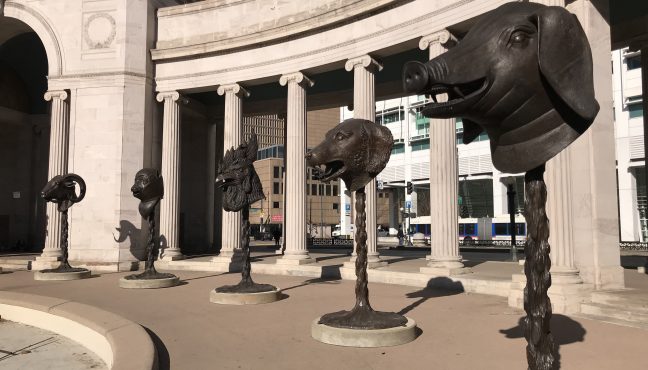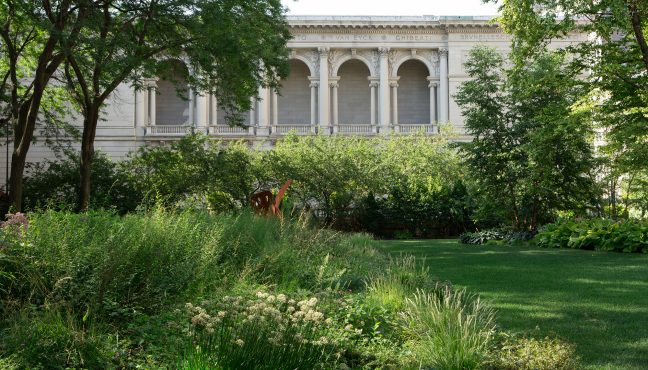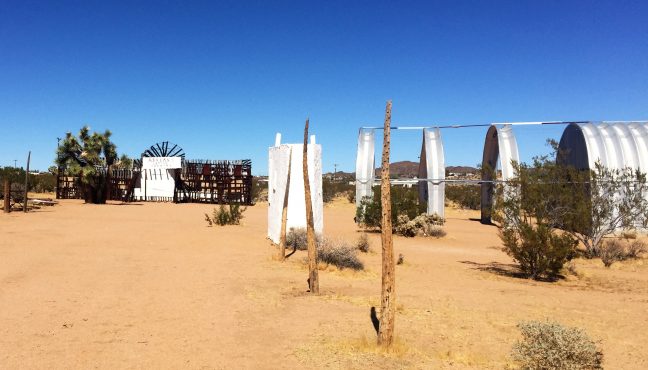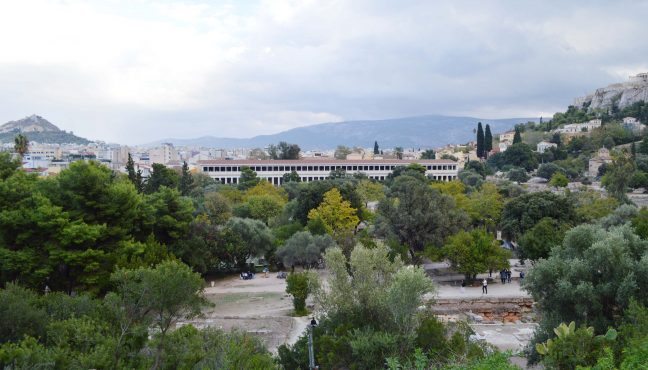The de Young Museum sculpture garden in the lively San Francisco Golden Gate Park is perfect if you need a few hours for yourself or a quiet place to take your date to. Just walk away from the busy museum café’s outside seating and come close to the site-specific works by Gerhard Richter, James Turrell, Andy Goldsworthy, Kiki Smith and inspiring pieces by other great artists. You would be surprised how the bustling and popular park fades into the background allowing you to loose yourself in a quiet peaceful place, right in the heart of the city’s gardens.
The sculpture garden opened in 2005 when the new de Young building was inaugurated. Today, it is a part of the largest public art institution in the city and one of the largest in California – The Fine Arts Museums of San Francisco. The de Young has a long history, from 1895 it went through relocations, demolitions and even suffered great losses during the 1989 Loma Prieta earthquake. The new de Young building by the Swiss architectural firm Herzog & de Meuron was designed with seismic activity in mind. The main building rests on base isolators that can rise up to three feet (91 centimeters) and absorb ground vibrations, thereby reducing the movement of the building during an earthquake. Historic elements from the former de Young, such as the sphinxes, the original palm trees, and the Pool of Enchantment, have been retained or reconstructed at the new museum. So now the de Young building not only weaves the museum into the natural environment of the park, but also makes it part of history and nature.
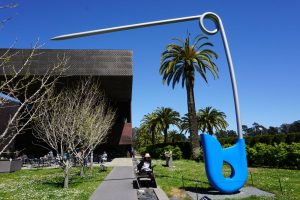
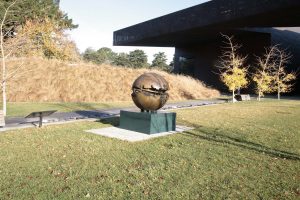
We talked to Francisco Rosas – Public Relations Coordinator at the Fine Arts Museums of San Francisco about de Young museum and the institution’s new director Max Hollien.
The de Young museum is located right in the center of the city, in the Golden Gate Park, is it a challenge to have a museum in a touristy, popular place?
We serve tourists and locals, and enjoy and benefit from the proximity to other great things in San Francisco: our location in Golden Gate Park, the Conservatory of Flowers, the Japanese Tea Garden and the California Academy of Sciences (just across the music concourse from us).
There enter to the garden and the Hamon Tower observatory is free, do museum tickets cover the expenses?
The museum does have a large amount of space, which is open and free to the public. As you mentioned, both the Hamon Education Tower, with its incomparable views of the city, and the sculpture garden are free. Our artist studio (which hosts a monthly artists residency), Wilsey Court and the Piazzoni Mural Room are also free. The sculpture garden is named after a donor Barbro Osher.
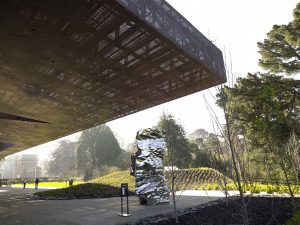
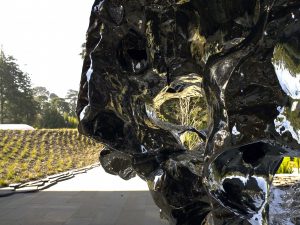
We must say that the twisting 144 foot (40 meters) Tower offers a wonderful 360-degree view of San Francisco and is a distinctive feature itself, rising above the canopy of Golden Gate Park. Do not miss taking an elevator ride there! Apart from the Tower, we were very much moved by James Turrell’s “Three Gems” sky space. Fransisco advised to view it at sunset “when the sky is changing the most”. If you decide to see it during sunset, come on a Friday! Since after 5:30 pm on Fridays general admission to the museum is free and there is always a lot of special activity, art making, lectures, bands, live performances, eating and drinking. Talking about eating, the museum café, situated right by the sculpture park offers great selection of snacks and main courses, do try desserts and lattes.
The café is situated right by the garden, so you can sit and enjoy the beauty of the park. What works can be seen from the café? And what would be your favorite meal of this season?
Visitors are encouraged to eat both inside and outside at our café. One of the largest works that is hard to ignore while dining al fresco is Claes Oldenburg and Coosje van Bruggen’s giant “Corridor Pin, Blue”. We have a rotating and seasonal menu, so there is always something new in the café. When special event takes part in the garden, the café is included. Past November, the garden was constantly activated by artists, performers and music in celebration of the building’s ten-year anniversary.
Even during events the sculpture garden doesn’t let you feel cramped due to intelligent and elegant design by Walter Hood, who is responsible for wonderful spaces like the Broad Museum Plaza in LA and Jackson Sculpture Terrace in Wyoming. The spacing of the garden with all of the alcoves and open areas lets you BREATHE and relax as if you were alone. The landscape design integrates historic elements from the old de Young, including the original palm trees, as well as sandstone, redwood, ferns and other plants and materials relevant to the site, creating a museum that is permeable, open, and inviting to the public.
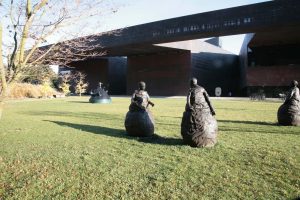
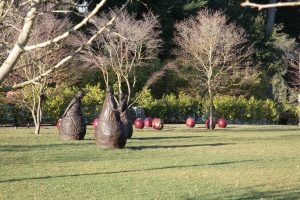
Next week, June 1st, Max Hollien will become the director of the Fine Arts Museums of San Francisco. It is too early to have details about his visions for the institution, but as Francisco told us: “we are very excited to have him come on board to lead our organization”. In the past Hollein succeeded in repositioning Frankfurt’s Schirn Kunsthalle internationally, integrated a wide spectrum of new exhibition formats in Stadel Museum and under his directorship the Liebieghaus Skulpturensammlung underwent the greatest reorganization of its infrastructure.
Museeum will be happy to visit the de Young museum again and can’t wait to see what will Max Hollien introduce to the museum.
